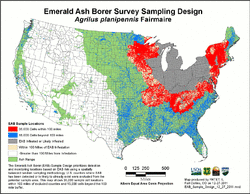Reading the Schooling Myself thread, I have questions about managing tree growth in order to promote a healthy future of the lot.
My brother recently bought as home which includes 5 acres of heavily wooded property directly behind the home. We both burn wood, so, this is a huge plus. Walking through, the growth is 75% beech with the rest being eastern white pine, oak, white birch and maple. I've also seen a couple poplar. We've cut a road in and have been cutting selectively, starting with the obviously sick trees, clearing underbrush and thinning the area. The entire area is thick with beech saplings.
Should we cut the eastern pine out to allow sunlight and open the area up, or is there some advantage to leaving them?
I'm looking for solid management ideas to help him plan this 5 acre lot for future harvesting of firewood.
My brother recently bought as home which includes 5 acres of heavily wooded property directly behind the home. We both burn wood, so, this is a huge plus. Walking through, the growth is 75% beech with the rest being eastern white pine, oak, white birch and maple. I've also seen a couple poplar. We've cut a road in and have been cutting selectively, starting with the obviously sick trees, clearing underbrush and thinning the area. The entire area is thick with beech saplings.
Should we cut the eastern pine out to allow sunlight and open the area up, or is there some advantage to leaving them?
I'm looking for solid management ideas to help him plan this 5 acre lot for future harvesting of firewood.



